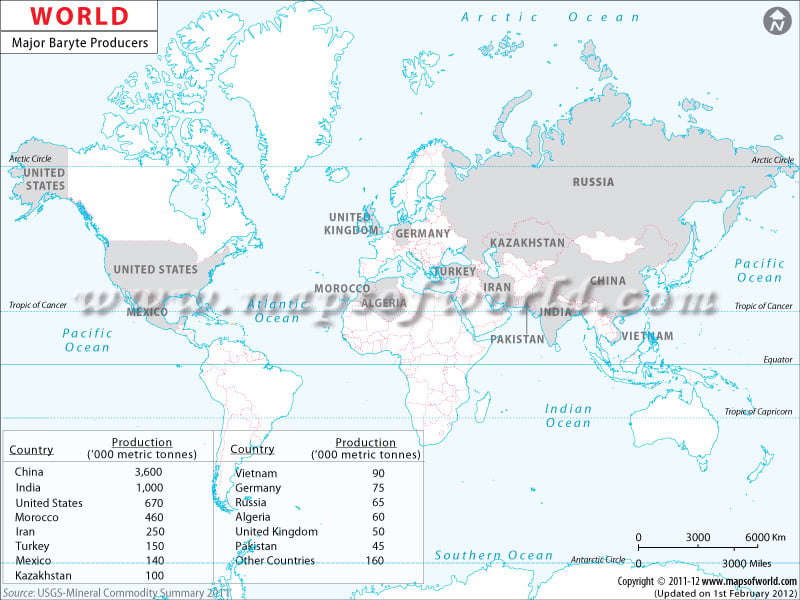Baryte, or barite is a white or colorless mineral consisting of barium sulfate. It is the main source of barium. The mineral has a high specific gravity, low solubility; and is chemically and physically unreactive.
Baryte is commonly found in lead-zinc veins in limestones, in hot spring deposits, and with hematite ore, and meteorites. It is extracted by both surface and underground mining, and the processed to remove extraneous materials.
The major bulk of the mineral produced is used as a weighting agent for drilling fluids in oil and gas exploration. It also finds use in medical applications and in the manufacture of car, electronics, TV screen, rubber, and glass ceramics.
The World Baryte Producers Map shows a list of the major nations where baryte is mined in large quantities.
As the data in the map shows, China is the leading country in the production of baryte; in 2010 it produced 3600 thousand metric tonnes. The second place is occupied by India with an annual production of 1000 thousand metric tonnes.
The United States ranks third followed by Morocco, Iran, Turkey, Mexico, Kazakhstan, Vietnam, Germany, Russia, Algeria, United Kingdom, and Pakistan.
Barytes is non-toxic and is often used in cosmetics as a substitute of titanium dioxide. Properties like strong inertia, good stability, moderate rigidity, and high specific gravity make barytes an environmental-friendly material hence its use in engineering plastic, paint industry, medicine, rubber, paper-making, pottery, and cosmetics.
MAJOR PRODUCERS OF BARYTE IN WORLD-2010
| COUNTRY | PRODUCTION IN THOUSAND METRIC TONNES |
|---|---|
| China | 3600 |
| India | 1000 |
| United States | 670 |
| Morocco | 460 |
| Iran | 250 |
| Turkey | 150 |
| Mexico | 140 |
| Kazakhstan | 100 |
| Vietnam | 90 |
| Germany | 75 |
| Russia | 65 |
| Algeria | 60 |
| United Kingdom | 50 |
| Pakistan | 45 |
| Other Countries | 160 |

